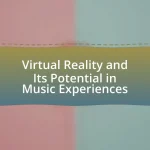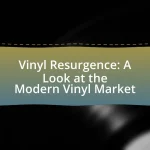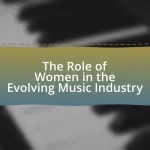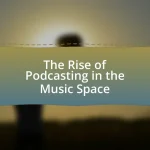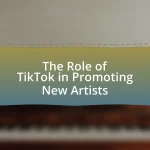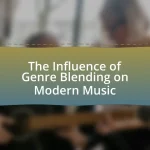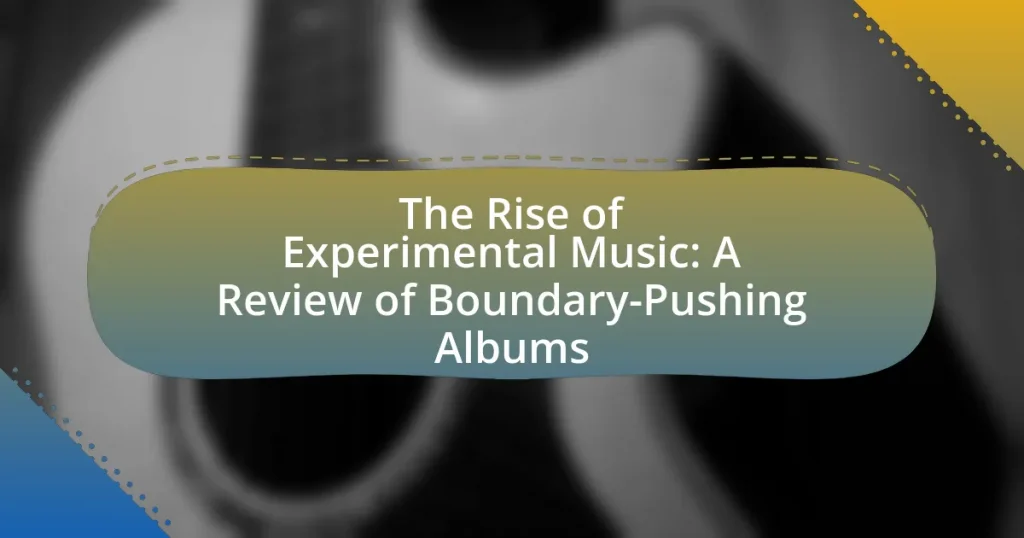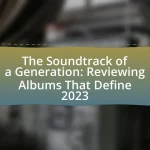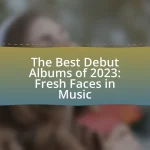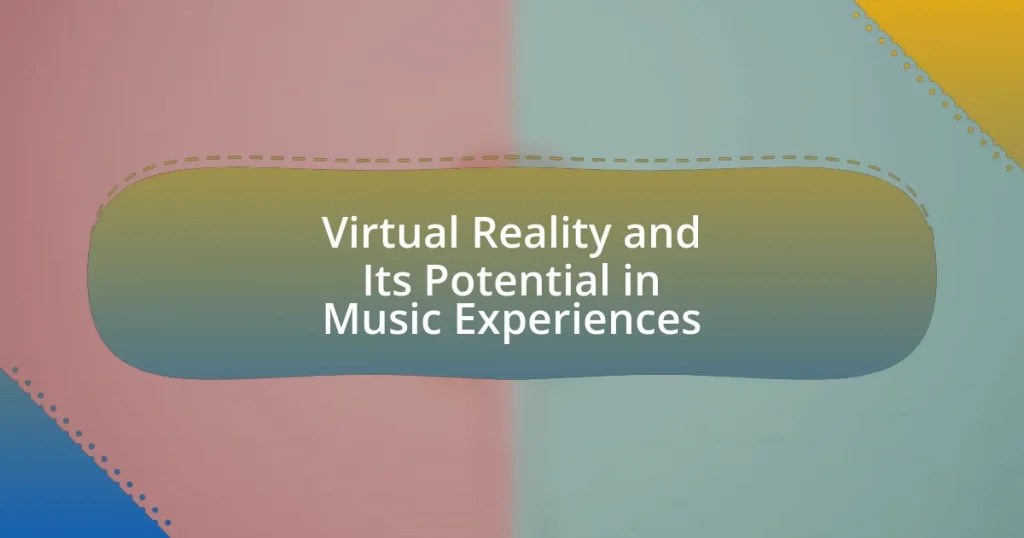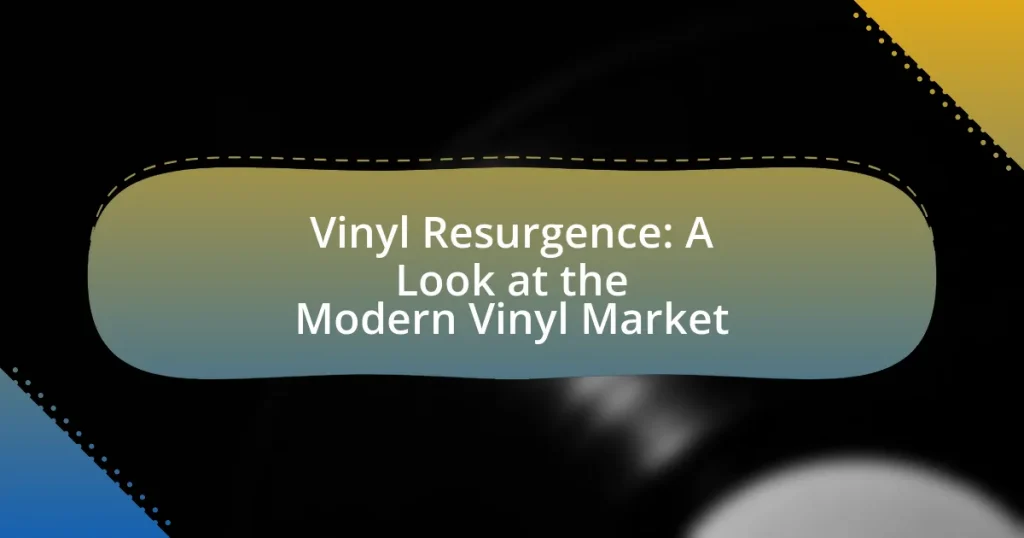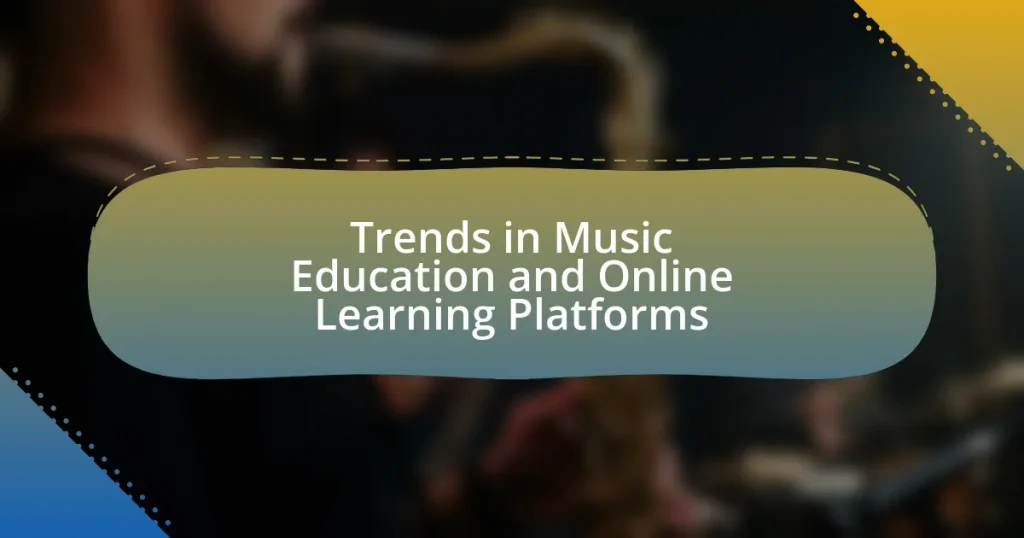Experimental music is a genre that prioritizes innovation and the exploration of new sounds, techniques, and forms, often defying traditional musical norms. This article reviews the evolution of experimental music, highlighting its historical influences, key characteristics, and the impact of technology on its development. It examines pivotal albums that have pushed boundaries within the genre, explores common themes and techniques, and discusses how cultural shifts and collaboration have shaped its landscape. Additionally, the article provides insights on how listeners can engage with and create their own experimental music, emphasizing the significance of this genre in contemporary music culture.
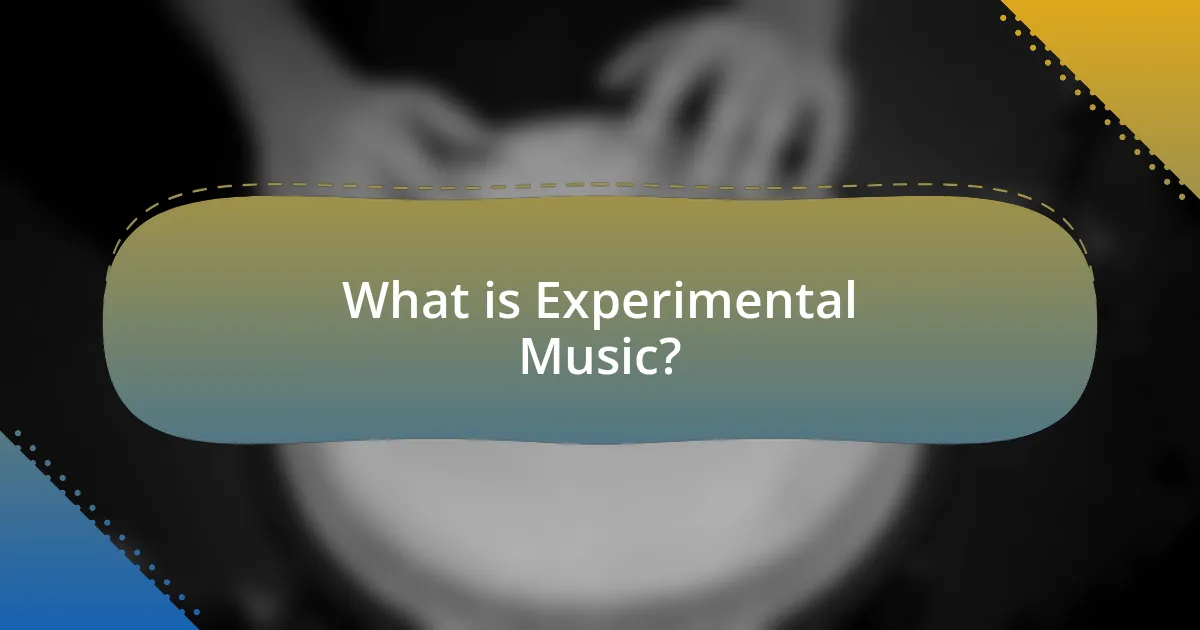
What is Experimental Music?
Experimental music is a genre that emphasizes innovation and the exploration of new sounds, techniques, and forms, often challenging traditional musical norms. This genre emerged prominently in the 20th century, with influential figures such as John Cage and Karlheinz Stockhausen pushing the boundaries of what music could be, incorporating elements from various disciplines, including visual arts and technology. The use of unconventional instruments, non-standard scales, and improvisation are common characteristics, reflecting a departure from established musical structures. Experimental music often invites listeners to engage with sound in a more abstract and conceptual manner, fostering a unique auditory experience that can provoke thought and evoke emotion.
How has Experimental Music evolved over time?
Experimental music has evolved significantly since its inception in the early 20th century, transitioning from avant-garde movements to a diverse array of genres and practices. Initially, composers like John Cage and Edgard Varèse challenged traditional musical structures, incorporating unconventional sounds and silence, which laid the groundwork for future experimentation. The 1960s and 1970s saw the emergence of electronic music, with artists such as Karlheinz Stockhausen and Brian Eno exploring new technologies and soundscapes, further expanding the boundaries of what music could be. In the late 20th and early 21st centuries, the rise of digital technology and the internet facilitated a proliferation of experimental genres, including noise, ambient, and glitch music, allowing for greater accessibility and collaboration among artists worldwide. This evolution reflects a continuous quest for innovation and expression, demonstrating how experimental music has become a vital part of contemporary culture.
What historical movements influenced the rise of Experimental Music?
The rise of Experimental Music was influenced by several historical movements, including Dadaism, Surrealism, and the avant-garde movements of the early 20th century. Dadaism, which emerged during World War I, rejected traditional aesthetics and embraced chaos and spontaneity, encouraging artists to explore unconventional soundscapes. Surrealism further pushed boundaries by integrating dream-like elements and irrationality into art, which translated into music through innovative techniques and structures. Additionally, the avant-garde movements, particularly in Europe and America, emphasized the exploration of new forms and ideas, leading to the incorporation of non-traditional instruments and electronic sounds in music. These movements collectively fostered an environment where experimentation became a central tenet of musical expression.
How do cultural shifts impact the development of Experimental Music?
Cultural shifts significantly influence the development of Experimental Music by altering societal norms, artistic expressions, and technological advancements. For instance, the counterculture movements of the 1960s, such as the hippie movement, encouraged musicians to explore unconventional sounds and reject mainstream music, leading to the emergence of genres like free jazz and avant-garde. Additionally, advancements in technology, such as synthesizers and digital audio workstations, have allowed artists to experiment with new soundscapes, reflecting the cultural embrace of innovation and change. Historical examples include the works of composers like John Cage, whose philosophies were shaped by the cultural context of his time, demonstrating how societal attitudes directly impact artistic exploration and the evolution of music.
What defines the characteristics of Experimental Music?
Experimental music is characterized by its innovative approaches to sound, structure, and composition, often challenging traditional musical norms. This genre frequently incorporates unconventional instruments, non-standard techniques, and a focus on the exploration of new sonic possibilities. For instance, composers like John Cage and Karlheinz Stockhausen utilized chance operations and electronic elements, respectively, to redefine music’s boundaries. Additionally, experimental music often emphasizes the process of creation over the final product, encouraging listeners to engage with the music in a more active and interpretive manner.
What are the common techniques used in Experimental Music?
Common techniques used in Experimental Music include unconventional sound sources, extended instrumental techniques, and the manipulation of recorded sounds. Unconventional sound sources involve using everyday objects or electronic devices to create music, as seen in works by composers like John Cage. Extended instrumental techniques refer to non-traditional methods of playing instruments, such as multiphonics on woodwinds or prepared piano techniques, which have been utilized by artists like Henry Cowell. Manipulation of recorded sounds includes techniques like sampling, looping, and digital processing, which are prevalent in the works of artists such as Brian Eno. These techniques collectively challenge traditional music structures and expand the boundaries of sound.
How do artists push boundaries within this genre?
Artists push boundaries within the genre of experimental music by incorporating unconventional sounds, innovative production techniques, and cross-genre collaborations. For instance, artists like Brian Eno utilize ambient soundscapes and generative music processes, challenging traditional song structures and listener expectations. Additionally, the use of technology, such as software for sound manipulation and live coding, allows musicians to create unique auditory experiences that defy conventional norms. This approach is evidenced by the rise of artists like Autechre, who blend electronic music with complex algorithms, resulting in compositions that are both intricate and unpredictable.
Why is Experimental Music significant in today’s music landscape?
Experimental music is significant in today’s music landscape because it challenges traditional boundaries and fosters innovation. This genre encourages artists to explore new sounds, techniques, and concepts, leading to the evolution of music as a whole. For instance, the rise of digital technology has enabled musicians to manipulate sound in unprecedented ways, resulting in unique auditory experiences that resonate with contemporary audiences. Additionally, experimental music often intersects with various genres, influencing mainstream music trends and inspiring artists across the spectrum. The impact of experimental music is evident in the works of influential artists like Björk and Radiohead, who incorporate avant-garde elements into their mainstream appeal, demonstrating its relevance and importance in shaping modern music.
What role does technology play in the evolution of Experimental Music?
Technology serves as a catalyst for the evolution of Experimental Music by enabling innovative sound manipulation and composition techniques. The introduction of electronic instruments, such as synthesizers in the 1960s, allowed artists to explore new sonic possibilities that traditional instruments could not provide. Additionally, advancements in digital audio workstations and software have democratized music production, allowing a broader range of artists to experiment with sound. For instance, the use of sampling technology has transformed how musicians create and layer sounds, leading to unique compositions that challenge conventional music structures. This technological influence is evident in landmark albums like “Revolution 9” by The Beatles and “The Disintegration Loops” by William Basinski, which showcase the integration of technology in their creative processes.
How does Experimental Music challenge traditional music norms?
Experimental music challenges traditional music norms by redefining the parameters of composition, performance, and audience engagement. This genre often incorporates unconventional sounds, structures, and techniques, such as the use of electronic instruments, found sounds, and non-standard time signatures, which diverge from established musical forms. For instance, composers like John Cage introduced chance elements in music, as seen in his piece “4’33”,” where silence becomes a critical component, directly opposing the expectation of continuous sound in traditional music. Additionally, artists like Brian Eno have utilized ambient soundscapes that prioritize atmosphere over melody, further disrupting conventional listening experiences. These innovations not only expand the definition of music but also invite listeners to reconsider their perceptions of what constitutes musicality.
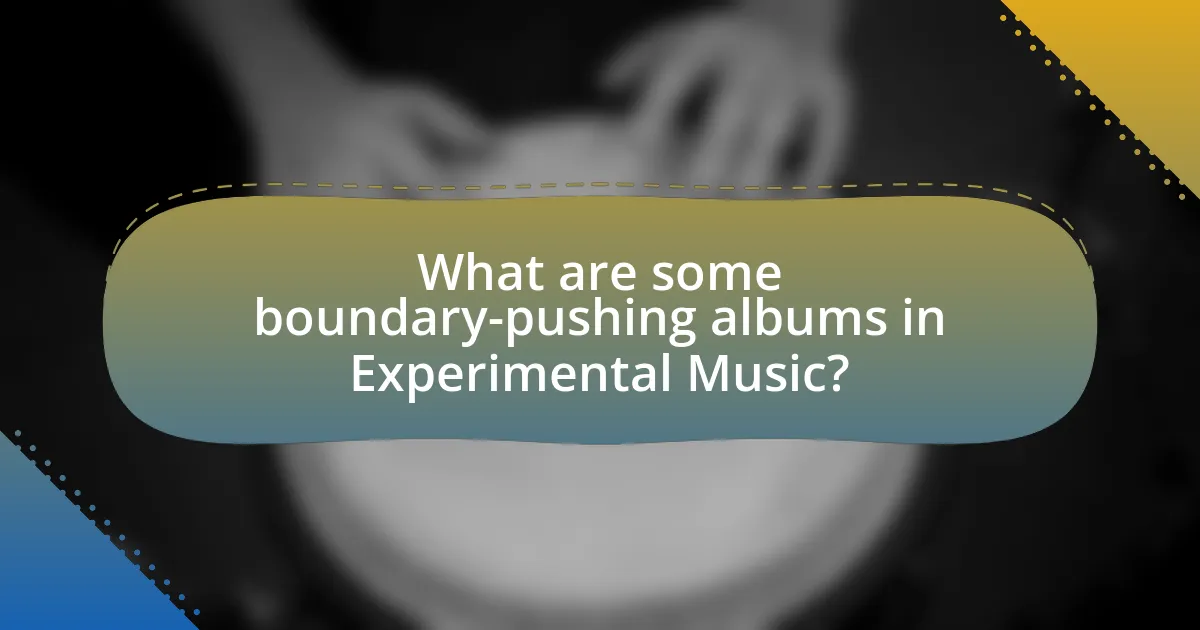
What are some boundary-pushing albums in Experimental Music?
Some boundary-pushing albums in Experimental Music include “Trout Mask Replica” by Captain Beefheart, “The Disintegration Loops” by William Basinski, and “Dark Side of the Moon” by Pink Floyd. “Trout Mask Replica,” released in 1969, is known for its unconventional song structures and avant-garde approach, challenging traditional rock norms. “The Disintegration Loops,” released in 2002, features tape loops that decay over time, creating a haunting soundscape that explores themes of memory and loss. “Dark Side of the Moon,” released in 1973, incorporates innovative studio techniques and thematic cohesion, influencing countless artists and genres. These albums exemplify the spirit of experimentation and innovation in music.
Which albums are considered pivotal in the Experimental Music genre?
Albums considered pivotal in the Experimental Music genre include “The Velvet Underground & Nico” by The Velvet Underground, “Bitches Brew” by Miles Davis, and “OK Computer” by Radiohead. “The Velvet Underground & Nico,” released in 1967, is often credited with influencing the development of alternative and experimental rock music through its avant-garde sound and lyrical content. “Bitches Brew,” released in 1970, marked a significant shift in jazz by incorporating rock elements and electronic instruments, thus expanding the boundaries of jazz music. “OK Computer,” released in 1997, is recognized for its innovative use of technology and complex themes, influencing a generation of musicians across various genres. These albums collectively showcase the evolution and impact of experimental music on contemporary soundscapes.
What makes these albums stand out in terms of innovation?
These albums stand out in terms of innovation due to their unique blending of genres, unconventional song structures, and the use of cutting-edge technology in production. For instance, artists often incorporate elements from electronic, jazz, and classical music, creating a hybrid sound that challenges traditional boundaries. Additionally, many of these albums utilize experimental recording techniques, such as field recordings and non-linear editing, which enhance their artistic expression. The impact of these innovations can be seen in the way they influence contemporary music trends, pushing other artists to explore new creative avenues and redefine genre conventions.
How have these albums influenced other artists and genres?
The albums in “The Rise of Experimental Music: A Review of Boundary-Pushing Albums” have significantly influenced other artists and genres by introducing innovative sounds and techniques that challenge traditional musical structures. For instance, the incorporation of unconventional instruments and electronic elements in these albums has inspired genres such as ambient, electronic, and avant-garde music. Artists like Radiohead and Björk have cited these boundary-pushing works as pivotal in their creative processes, leading to the evolution of alternative rock and pop. Additionally, the experimental approaches to rhythm and melody have permeated hip-hop and indie music, as seen in the works of artists like Flying Lotus and Sufjan Stevens, who blend genres and push sonic boundaries.
What themes are commonly explored in these boundary-pushing albums?
Boundary-pushing albums commonly explore themes of identity, societal critique, and the human experience. These themes often manifest through innovative soundscapes, unconventional song structures, and lyrical content that challenges norms. For instance, artists like Björk and Radiohead have delved into personal and collective identity, reflecting on technology’s impact on society and emotional vulnerability. Additionally, the exploration of mental health and existentialism is prevalent, as seen in albums like “Kid A” by Radiohead, which addresses feelings of alienation and anxiety. Such thematic depth not only pushes musical boundaries but also resonates with listeners on a profound level, making these works significant in the landscape of experimental music.
How do these themes reflect societal issues or personal experiences?
The themes in experimental music reflect societal issues and personal experiences by challenging conventional norms and expressing individual emotions. For instance, the use of unconventional sounds and structures often mirrors the chaos and complexity of modern life, addressing issues such as mental health, identity, and social alienation. Albums like “Kid A” by Radiohead illustrate this by exploring themes of anxiety and disconnection in a rapidly changing world, resonating with listeners who experience similar feelings. Additionally, artists often draw from personal narratives, making their work a vehicle for self-exploration and commentary on broader societal dynamics, thus creating a profound connection between the music and the listener’s own experiences.
What role does collaboration play in the creation of these albums?
Collaboration is essential in the creation of boundary-pushing albums in experimental music, as it fosters diverse artistic input and innovation. By bringing together artists with varying backgrounds, skills, and perspectives, collaborations enhance creativity and lead to unique soundscapes that challenge conventional music norms. For instance, albums like “The Social Network” by Trent Reznor and Atticus Ross exemplify how collaborative efforts can merge electronic and orchestral elements, resulting in groundbreaking compositions that redefine genres. This synergy not only enriches the music but also expands the audience’s experience, making collaboration a pivotal element in the evolution of experimental music.

How can listeners engage with Experimental Music?
Listeners can engage with Experimental Music by actively participating in live performances, exploring diverse soundscapes, and utilizing digital platforms for discovery. Engaging in live performances allows listeners to experience the spontaneity and unique interpretations that characterize Experimental Music, fostering a deeper connection with the artists. Exploring diverse soundscapes through various genres and subgenres helps listeners appreciate the innovative techniques and concepts that define this music style. Additionally, digital platforms like streaming services and social media provide access to a wide range of Experimental Music, enabling listeners to discover new artists and tracks, thus broadening their musical horizons.
What are the best practices for exploring Experimental Music?
The best practices for exploring Experimental Music include actively listening to a diverse range of artists, engaging with live performances, and utilizing technology for sound manipulation. Actively listening to various artists, such as John Cage and Brian Eno, exposes listeners to different techniques and styles, enhancing their understanding of the genre. Engaging with live performances allows for a deeper appreciation of the improvisational aspects and the unique atmosphere created in experimental settings. Additionally, utilizing technology, such as software for sound design and manipulation, enables individuals to experiment with their own compositions, fostering creativity and innovation in their musical exploration.
How can listeners identify and appreciate the nuances in Experimental Music?
Listeners can identify and appreciate the nuances in Experimental Music by actively engaging with its diverse soundscapes and unconventional structures. This genre often incorporates elements such as non-traditional instrumentation, extended techniques, and innovative use of technology, which can create unique auditory experiences. For instance, artists like John Cage and Brian Eno have utilized chance operations and ambient sound, respectively, to challenge conventional musical forms. By focusing on these distinctive characteristics, listeners can develop a deeper understanding of the artistic intentions behind the compositions. Engaging with the music through repeated listening and exploring the context of the works can further enhance appreciation, as many experimental pieces are designed to evoke specific emotions or provoke thought, making the listening experience both personal and transformative.
What resources are available for discovering new Experimental Music artists?
Online platforms such as Bandcamp, SoundCloud, and Spotify are essential resources for discovering new Experimental Music artists. Bandcamp allows users to explore independent artists and niche genres, often featuring experimental music prominently. SoundCloud offers a vast array of user-uploaded tracks, making it a hotspot for emerging experimental musicians. Spotify’s curated playlists and algorithmic recommendations help listeners find new artists based on their listening habits. Additionally, websites like The Quietus and Pitchfork frequently review and highlight new experimental music, providing insights into the latest artists and trends in the genre.
How can one create their own Experimental Music?
To create your own experimental music, start by exploring unconventional sounds and techniques, such as using non-traditional instruments, found objects, or digital manipulation. This approach aligns with the practices of influential experimental musicians like John Cage, who famously utilized chance operations and everyday sounds in his compositions. Additionally, consider incorporating elements of improvisation and collaboration, as seen in the works of artists like Sun Ra, who blended jazz with avant-garde concepts. By embracing these methods, you can push the boundaries of traditional music and develop a unique sonic identity.
What tools and techniques are essential for beginners in Experimental Music production?
Essential tools and techniques for beginners in Experimental Music production include digital audio workstations (DAWs) like Ableton Live or FL Studio, which provide a platform for sound manipulation and arrangement. Additionally, synthesizers, both hardware and software, are crucial for creating unique sounds, while audio effects such as reverb, delay, and distortion enhance sonic experimentation. Techniques such as sampling, field recording, and granular synthesis allow for innovative sound design, enabling beginners to explore unconventional audio textures. These tools and techniques are foundational in the genre, as they facilitate creativity and exploration, which are central to experimental music.
What tips can help aspiring artists push their creative boundaries?
Aspiring artists can push their creative boundaries by experimenting with diverse mediums and techniques. Engaging with various art forms, such as visual arts, music, or performance, allows artists to discover new perspectives and methods that can enhance their own work. For instance, a painter might explore sound art to inspire their visual compositions, leading to innovative cross-disciplinary creations. Additionally, collaborating with other artists can introduce fresh ideas and challenge existing norms, fostering an environment of creativity and exploration. Research indicates that collaboration often leads to increased innovation, as seen in studies by the National Endowment for the Arts, which highlight the benefits of interdisciplinary approaches in artistic development.
